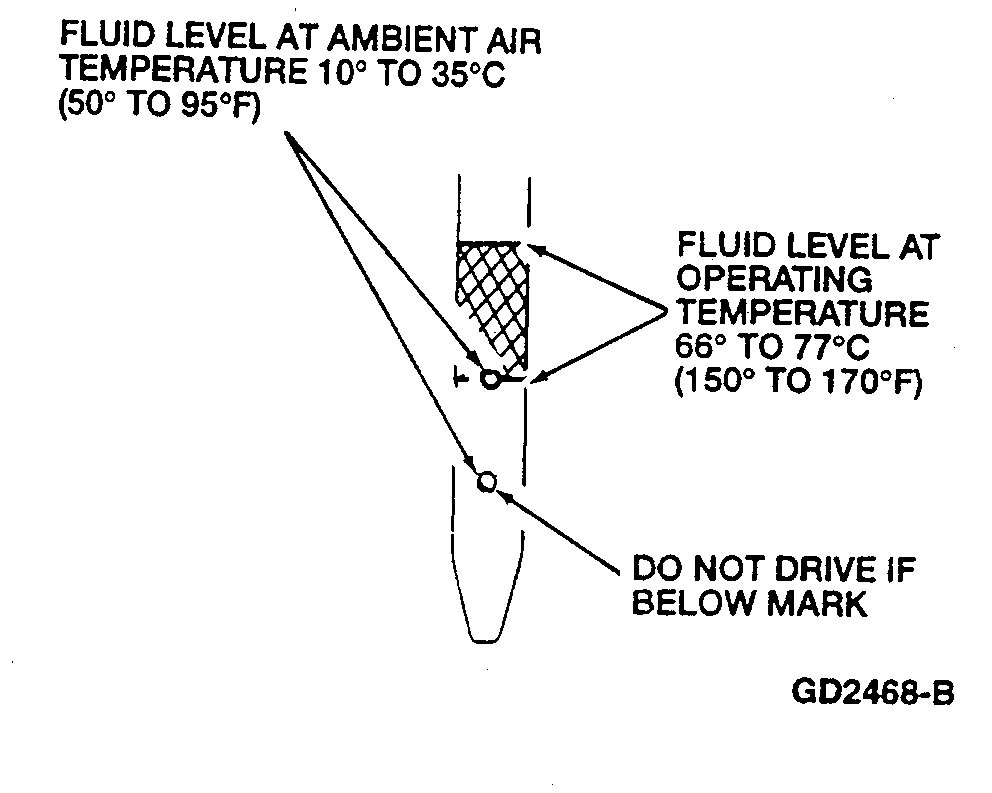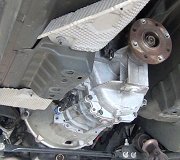Hi,
The idea that it shifts okay cold and then not when warm could be a few things. As far as the valve body, anything is possible but I wouldn't think that is it. Have you checked to make sure the fluid is clean and full? I ask because it sounds like a pressure related issue. I'm wondering if the filter is plugging after it runs due to excessive dirt in the pan that isn't in the filter when cold, but as the fluid is drawn in it plugs the filter begins to plug up and lower line pressure.
Lets start by checking fluid condition and level. Here are directions for both. The attached pics correlate with the directions.
___________________________________________________________________________________________
1997 Ford Truck Explorer 4WD V6-245 4.0L SOHC VIN E EFI
Fluid Level Check
Vehicle Maintenance Fluids Fluid - A/T Testing and Inspection Component Tests and General Diagnostics Fluid Level Check
FLUID LEVEL CHECK
NOTE: If the vehicle has been operating for an extended period at high speeds in city traffic during hot weather or pulling a trailer, the vehicle should be turned off for about 30 minutes to allow the oil to cool before checking.
Under normal circumstances, check the transmission fluid level during normal maintenance, it does not require a change. For severe duty only, change the fluid at 80,450 km (50,000 miles), since the vehicle does not use up transmission fluid. If the transmission is not working properly, or if there is some sign of fluid leakage, the fluid level should be checked.
It is preferable to check the transmission fluid level at normal operating temperature after approximately 32 km (20 miles) of driving. The fluid level can be checked without driving the vehicle if the outside temperature is above 10° C (50° F).
With the vehicle on a level surface, start the engine and move the transmission range selector lever through all of the gear ranges, allowing sufficient time for each position to engage. Securely engage the transmission range selector lever in the Park position, fully set the parking brake control and leave the engine running.
Wipe off the fluid level indicator cap, pull the fluid level indicator out and wipe the indicator end clean. Insert the fluid level indicator back into the oil filler tube and make sure it is fully seated. Pull the fluid level indicator out and read the fluid level.
Pic 1
When checking fluid at normal operating temperature, the fluid level should be within the crosshatched area on the fluid level indicator. When the vehicle has not been driven, and outside temperature is above 10° C (50° F), the fluid level should be between the holes in the fluid level indicator.
CAUTION: The vehicle should not be driven if the fluid level is below the bottom hole on the fluid level indicator and outside temperature is above 10° C (50° F).
A fluid level that is too high may cause the fluid to become aerated due to the churning action of the rotating parts of the transmission. Aerated fluid will cause erratic line pressure, which may result in harsh / soft shifts or engagements, damage to the clutch materials, improper torque converter operation, and fluid coming out of the vent.
CAUTION: If the fluid level is high, damage to the vehicle may occur. Excess fluid must be removed.
A fluid level that is too low will affect transmission operation, causing slipping, slow engagements, or damage to internal hardware. Low levels may also indicate that a leak is present in the fluid system. If the fluid level is low, add fluid.
_______________________________________________________
1997 Ford Truck Explorer 4WD V6-245 4.0L SOHC VIN E EFI
Fluid Condition Check
Vehicle Maintenance Fluids Fluid - A/T Testing and Inspection Component Tests and General Diagnostics Fluid Condition Check
FLUID CONDITION CHECK
1. Check the fluid level.
2. Observe color and odor of the fluid. It should be red, not brown or black. Odor may indicate an overheating condition, clutch disc or band failure.
3. Use an absorbent white facial tissue and wipe the fluid level indicator. Examine the stain for evidence of solid particles and for engine coolant signs (gum or varnish on fluid level indicator).
If particles are present in the fluid or there is evidence of engine coolant or water, the transmission fluid pan must be removed for further inspection.
If fluid contamination or transmission failure is confirmed by further evidence of coolant or excessive particles in the transmission fluid pan, the transmission must be disassembled and completely cleaned and serviced. This includes cleaning and flushing the torque converter and transmission cooling system.
During disassembly and assembly, all overhaul checks and adjustments of clearances and end play must be made.
After the transmission has been serviced, all diagnostic tests and adjustments listed in the Diagnosis by Symptom charts must be completed to make sure that the problem has been corrected.
_______________________________________________________
Let me know what you find or if you have other questions.
Take care,
Joe
Image (Click to make bigger)
Friday, April 17th, 2020 AT 5:03 PM



